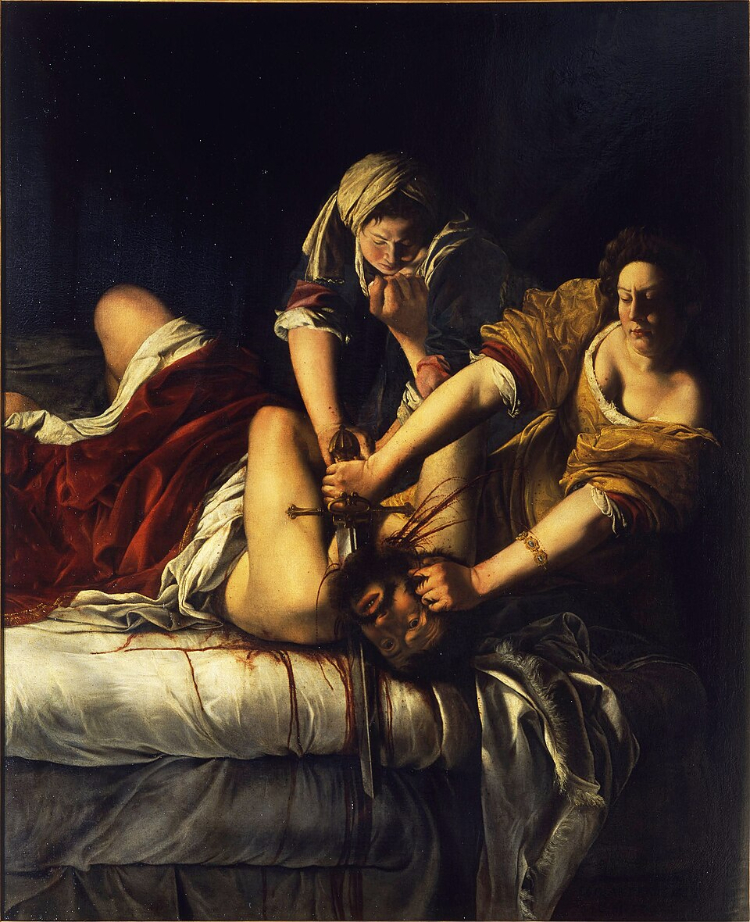Judith Slaying Holofernes by Artemisia Gentileschi

Judith Slaying Holofernes
...or The Bethulia Chainsaw Massacre. The painting is a depiction of an apocryphal book of the bible, titled - appropriately enough - The Book of Judith. Apocryphal text is text that isn't considered part of a known canon (think of it as cut footage when the Bible was compiled).
The story follows Judith as she seduces and slays the Assyrian general Holofernes in order to save her people in the town of Bethulia. True to its Baroque form, the painting picks up in the middle of the action and doesn't shy away from gore.
This was a deeply personal painting for Gentileschi, as it was inspired by her rape by a trusted patron years earlier. It's also notable for its depiction of strong female characters - Judith, with her diligent demeanor in separating Holofernes from his brain container and Abra, her maidservent, assisting her mistress without hesitation.
Patrons considered the masterpiece so brilliant that it was assumed a woman couldn't have painted it. As a result, Gentileschi languished in art history obscurity until the 20th century, when it was discovered through painstaking research by the male establishment that women, in fact, had the ability to paint.
The sequel is always bloodier
This was actually Gentileschi's second rendition of this painting. While the first was gruesome enough, this one made sure to add more arterial spray.
Surprisingly, Caravaggio - no stranger to violence in his own works - painted an earlier rendition that was much more demure. The women present in his painting handled the beheading as though it were an unpleasant task that had to be completed before day's end.
Here, the women knuckle down with palpable emotion spurring on their veangeance. The limbs of all of the subjects in the painting draw the eye to the macabre deed. Gentileschi wanted to ensure that this wasn't something the viewer could shy away from and arranged her composition accordingly.
Spotlight on a murder
Gentileschi used even more dramatic lighting via tenebrism to call attention to the painting's action. The lighting in Carravagio's paintings looks downright cheerful by comparisom.
In addition to setting the scene, Gentileschi's attention to detail was also extensive. Droplets of blood from Holofernes's beheading can be seen dotting his assassin, while he dies draped in an ornately textured velvet blanket.
